 Telluride, CO is one of those places that has appeared and reappeared on my radar for many years. Imagine my delight when the opportunity to finally visit presented itself in the shape of a teaching job. Not only is the town known for its festivals, art scene, long list of heavenly summer and winter activities, and foodie atmosphere, there is an additional resource that serves locals and visitors well – the outstanding Ah Haa School for the Arts. Just visit the website to see the countless events, classes and activities hosted by the school.
Telluride, CO is one of those places that has appeared and reappeared on my radar for many years. Imagine my delight when the opportunity to finally visit presented itself in the shape of a teaching job. Not only is the town known for its festivals, art scene, long list of heavenly summer and winter activities, and foodie atmosphere, there is an additional resource that serves locals and visitors well – the outstanding Ah Haa School for the Arts. Just visit the website to see the countless events, classes and activities hosted by the school.  The school is so enthusiastically embraced by the community that growth has exceeded the space for a second time since its inception in 1990. Partnering with the city of Telluride, plans are in the works to move into a 10,000 square foot space in 2020. In the meantime, the bustling program, which includes a full schedule of children and adult art classes, is located in the historic train depot next to the gondola and along the idyllic river trail at the base of the Telluride Ski Resort.
The school is so enthusiastically embraced by the community that growth has exceeded the space for a second time since its inception in 1990. Partnering with the city of Telluride, plans are in the works to move into a 10,000 square foot space in 2020. In the meantime, the bustling program, which includes a full schedule of children and adult art classes, is located in the historic train depot next to the gondola and along the idyllic river trail at the base of the Telluride Ski Resort.
For the past four years I have worked to hone a mixed media workshop. Teaching the class roughly 5 times a year brings me great joy. It is an alternative to spending long hours in the studio on commission jobs and getting ready for exhibits. Meeting and getting to know the students, who come into the class with varied degrees of art experience, is a highlight and has lead to many treasured friendships. Equally as valuable (as many teachers express) is the process of teaching – the demo prep, the lectures, the critiques, the exposure to student opinions and perspectives – provides me with a boost of inspiration, gratefulness and education.
 Last week at the Ah Haa School was no exception to the joys and benefits of teaching. After settling in at the Mountainside Inn, I walked over to the art school to meet the people I only knew through email and to see the workshop space. Then I headed over to the recently renovated and wildly popular, Wilkinson public library to present a lecture about the purpose of art, mixed media techniques, and my own two bodies of work. Afterward, one of the students kindly offered to take me to a local favorite, Esperanza’s, for a quick bite. Starting with the shuttle driver from the Montrose airport and ending in a lively bar discussion about affordable housing, I immediately noticed the uplifting, positive, engaging atmosphere created by the people of Telluride.
Last week at the Ah Haa School was no exception to the joys and benefits of teaching. After settling in at the Mountainside Inn, I walked over to the art school to meet the people I only knew through email and to see the workshop space. Then I headed over to the recently renovated and wildly popular, Wilkinson public library to present a lecture about the purpose of art, mixed media techniques, and my own two bodies of work. Afterward, one of the students kindly offered to take me to a local favorite, Esperanza’s, for a quick bite. Starting with the shuttle driver from the Montrose airport and ending in a lively bar discussion about affordable housing, I immediately noticed the uplifting, positive, engaging atmosphere created by the people of Telluride.
The next day during our class introductions, I quickly realized the positive encounters 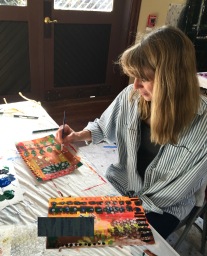 from the previous day were not just beginner’s luck. In fact, as the students told a little about themselves and their workshop goals, I found myself in awe of their experiences, careers and achievements. I was relieved to learn that many of the methods and materials on my agenda were new to most of the students, so I would have something to offer the accomplished group.
from the previous day were not just beginner’s luck. In fact, as the students told a little about themselves and their workshop goals, I found myself in awe of their experiences, careers and achievements. I was relieved to learn that many of the methods and materials on my agenda were new to most of the students, so I would have something to offer the accomplished group.
For anyone out there interested in the agenda, here is a bare bones outline I use for the Mixed Media workshop series:
- Various ways to apply paint
- How to make and use stencils and stamps
- Image transfer
- Collage techniques
- How to use gel medium (ie building texture)
- Incorporating lines, doodles, drawings and text
Throughout the workshops, we also discuss:
- Elements of Art and Principles of Design
- How to critique artwork including our own
- Compositional tips
- How to resuscitate a “failed” painting
Each morning was open to exploring and the afternoons dedicated to teaching. One morning I tried out cross country skiing in Town Park (thank you Telluride Nordic Association!), one morning I hiked up Wiebe trail (thank you for the directions, Kris!) and one morning I walked around town visiting shops and galleries.

I wasn’t sure what to expect when visiting the galleries. Would I find a focus on the beautiful surrounding landscape such as the aspen tress? Would the galleries feature winter sport themes? Would most of the art be contemporary or traditional? Representational or abstract? Even with the three free mornings (there is so much to see and do in this little town!), I only had time to visit two: Telluride Gallery of Fine Art and Slate Gray Gallery.
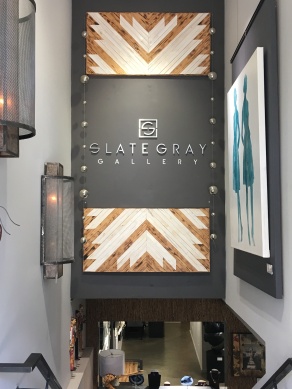

As the oldest gallery in town, the Telluride Gallery of Fine Art, represents a range of artists from locally known to internationally recognized….and when I say “internationally recognized,” take, for example, Maya Lin, recipient of the 2016 Presidential Medal of Freedom and designer of the Vietnam Veterans Memorial in Washington, DC. I’m still disappointed that I missed her lecture last year at Crystal Bridges Museum of American Art in my home state of Arkansas. The gallery also represents Malcolm Liepke, whose luscious figures I’ve studied since grad school. One of my favorite artists on their roster is Krista Harris (who teaches at the Ah Haa School!). Though her style is uniquely her own, the large abstract paintings are reminiscent of Cy Twombly’s mark making and Joan Mitchell’s energetic brush work. These are paintings one can explore and enjoy for a long time, discovering nuances and details with each visit.

Quilt & Poppy Diptych by Nina Tichava
At the Slate Gray Gallery, I had the pleasure of visiting with the manager Bekah Kolbe, who I previously and serendipitously met on a Facebook group page. It is strange how social media can enrich in-person meetings by providing a little context and familiarity. Bekah kindly gave me a tour of the space while we talked about art, artists, process and politics. I was immediately drawn to the work of Nina Tichava possibly due to her use of my favorite art element that students hear me talk about constantly: Contrast. For example, in “Quilt and Poppy Diptych,” she employs contrasting lines (thin versus thick, measured versus organic), contrasting colors (orange against blue, black against white), contrasting shapes (organic versus geometric), contrasting sizes (tiny and delicate versus large and bold) and contrasting marks (soft and loose versus hard and rigid). What’s the result? Tension, energy, focus and movement that grabs the viewers attention and makes me want to look at the work for a long time. These two galleries were well worth the visit with a mixture of mediums and styles of fine art. To get a more complete picture of the Telluride art scene, next time I will be sure to visit more galleries and will check out the Telluride Arts HQ as well as the American Academy of Bookbinding.
at the work for a long time. These two galleries were well worth the visit with a mixture of mediums and styles of fine art. To get a more complete picture of the Telluride art scene, next time I will be sure to visit more galleries and will check out the Telluride Arts HQ as well as the American Academy of Bookbinding.
Before signing off, I need to make note of a few food favorites (confession – this is one of those posts where the food might take up as much space as the art). I wish I could have visited Ghost Town for every single meal. I don’t know what makes it spectacular, but they have the best avocado toast I’ve ever had. Maybe it is the bread? Or the seasoning sprinkled over the avocados? Or the zesty hint of lime? It was almost impossible to  decide what to order when looking over the menu and I’ve heard every breakfast and lunch item is equally as delicious. The tea and coffee made it a mandatory must stop each day even though the Mountainside Inn keeps their coffee caraft hot and full all day long.
decide what to order when looking over the menu and I’ve heard every breakfast and lunch item is equally as delicious. The tea and coffee made it a mandatory must stop each day even though the Mountainside Inn keeps their coffee caraft hot and full all day long.
 And I must mention Tacos del Gnar. As I waited for the place to open, another customer joined me at the table out front. A couple walked by and asked if the tacos are good, and the man sternly answered “Well, yes, of course they are!” The woman asked what makes them so special, and he stampered, “I can’t explain, just… everything!” Which sums up my description. I don’t know what makes their tacos supreme – but they are.
And I must mention Tacos del Gnar. As I waited for the place to open, another customer joined me at the table out front. A couple walked by and asked if the tacos are good, and the man sternly answered “Well, yes, of course they are!” The woman asked what makes them so special, and he stampered, “I can’t explain, just… everything!” Which sums up my description. I don’t know what makes their tacos supreme – but they are.
As mentioned earlier, I ate at Esperanza’s one night with a student and I’m not sure which was better – the welcoming crowd or the food. I found myself wishing I could take the coleslaw home like my companion did. The same student kindly ushered me one evening after class up, up and away to Allreds. Accessible only by gondola, I expected a rustic ski joint but I was wrong. This is fine dining with the most spectacular views. The reservation list is full for months and we were lucky to squeeze in at the bar (hello Trenton and JoJo!) which is a bit more affordable than the dining room. I would have disturbed too many diners by taking photos of the surrounding San Juan mountains so instead I give you this: a mountain of strawberry rhubarb cobbler.
at the bar (hello Trenton and JoJo!) which is a bit more affordable than the dining room. I would have disturbed too many diners by taking photos of the surrounding San Juan mountains so instead I give you this: a mountain of strawberry rhubarb cobbler.
As a finale, several of the students were available for dinner at Siam on my last night in town. While classmates Nancy and Laurie were certainly missed, I am so grateful for the extra time spent with many of the students. Being treated to dinner was almost more than I could bare as a grand gesture of kindness that perfectly mirrored  every special interaction in Telluride. Finally, I must thank Kris Kwasniewski at the Ah Haa School for accepting my teaching proposal and inviting me to the school as a visiting artist. Kris and the Ah Haa staff were organized and accommodating, making the job and visit a smooth and rewarding experience. Thank you to Kris, Kathleen, Jess and Tara!
every special interaction in Telluride. Finally, I must thank Kris Kwasniewski at the Ah Haa School for accepting my teaching proposal and inviting me to the school as a visiting artist. Kris and the Ah Haa staff were organized and accommodating, making the job and visit a smooth and rewarding experience. Thank you to Kris, Kathleen, Jess and Tara!
Until next time…thanks for reading.
Laura











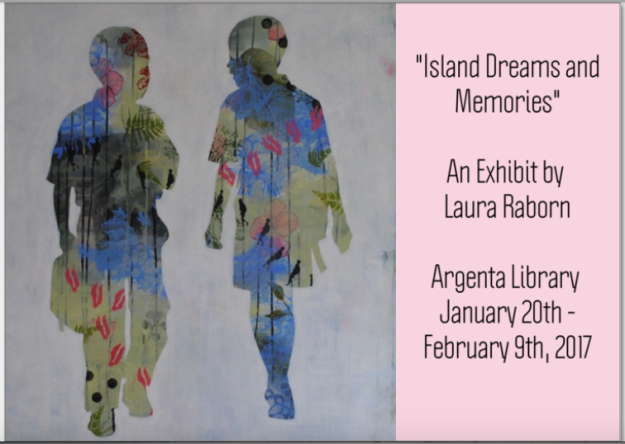


























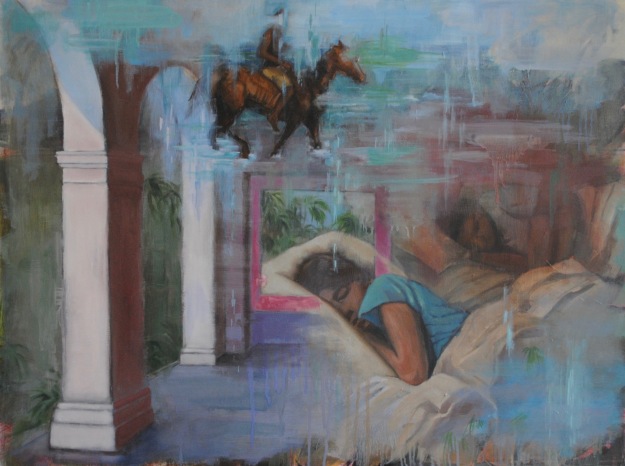











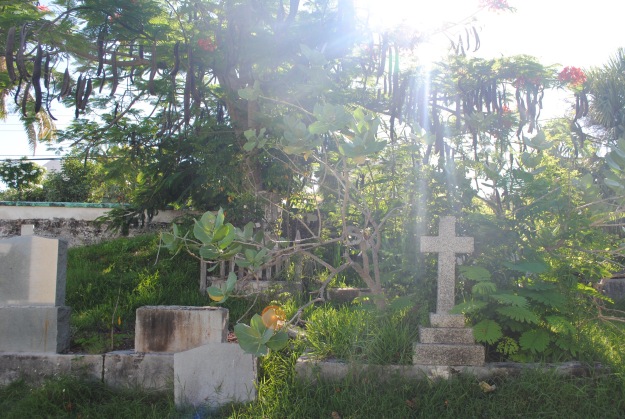














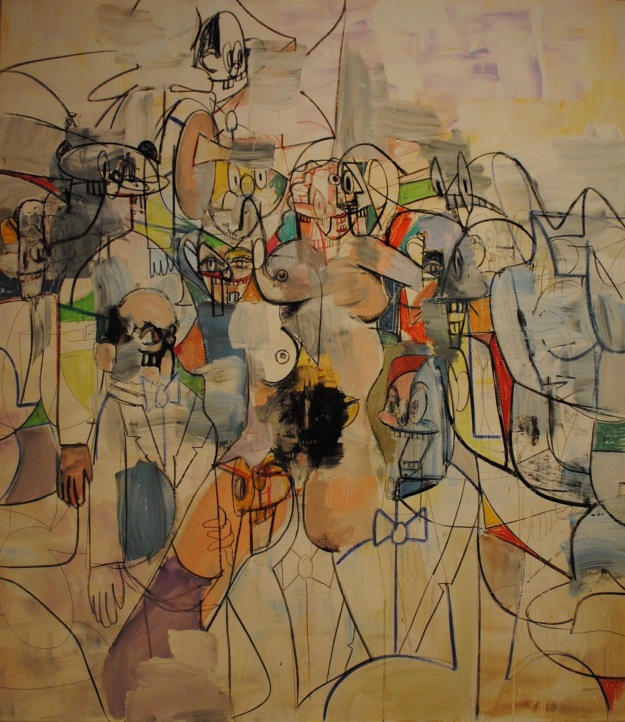






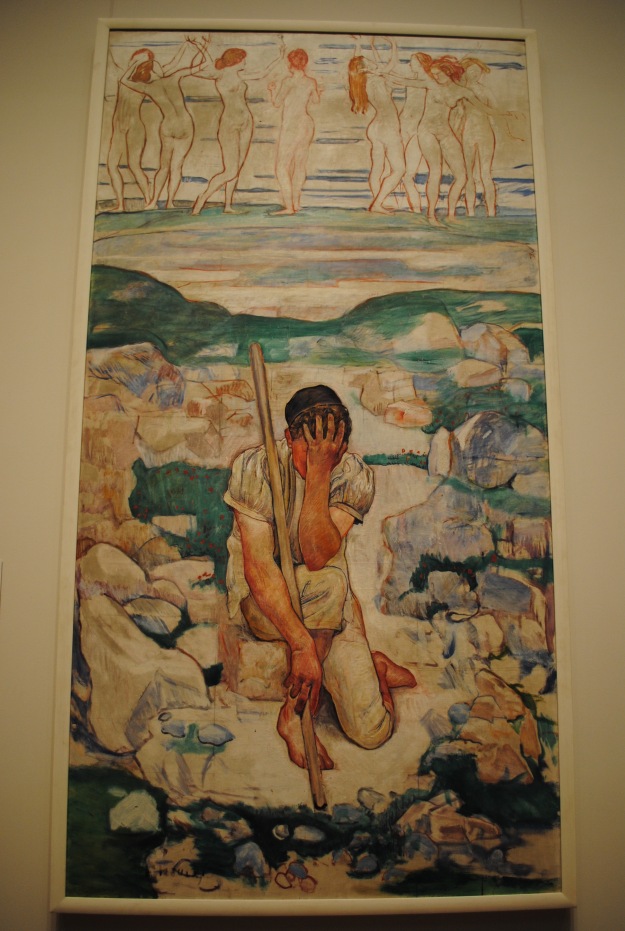












 The benefits of layering our mixed media pieces are numerous. For starters, a rich history is built into the composition. Intrigue is created with areas that become partially hidden or obscured. Layering creates an interesting surface, one that is dynamic and deep. During the layering process, we can develop texture. Finally, a willingness to cover up our work allows for the unexpected….the happy accident. If we see each mark as precious, we tend to get attached to mediocre work and wonder why our art isn’t growing or why we can’t seem to get to the next level. The “next level” requires a fearlessness and ability to paint over, to abolish, to cover our work in a constant exploration of style, material use and composition development.
The benefits of layering our mixed media pieces are numerous. For starters, a rich history is built into the composition. Intrigue is created with areas that become partially hidden or obscured. Layering creates an interesting surface, one that is dynamic and deep. During the layering process, we can develop texture. Finally, a willingness to cover up our work allows for the unexpected….the happy accident. If we see each mark as precious, we tend to get attached to mediocre work and wonder why our art isn’t growing or why we can’t seem to get to the next level. The “next level” requires a fearlessness and ability to paint over, to abolish, to cover our work in a constant exploration of style, material use and composition development.




 3. You can also use acrylic gel medium to create windows to the layers underneath the final layer. Paint the gel medium thickly in whatever shape(s) you choose, let the medium completely dry, then paint over the entire piece. Using a damp rag or paper towel, wipe
3. You can also use acrylic gel medium to create windows to the layers underneath the final layer. Paint the gel medium thickly in whatever shape(s) you choose, let the medium completely dry, then paint over the entire piece. Using a damp rag or paper towel, wipe  back the paint from the areas where there is medium and you will have created a window. If the paint dries and seems stuck to the medium, use a razor blade to scrape paint off, which creates an interesting texture. Other resists that are fun to try include candle wax and one of my favorites: rubber cement.
back the paint from the areas where there is medium and you will have created a window. If the paint dries and seems stuck to the medium, use a razor blade to scrape paint off, which creates an interesting texture. Other resists that are fun to try include candle wax and one of my favorites: rubber cement.
 Whether your work includes representational imagery, or is purely abstract, learning to work with layers will provide you with a strong tool to develop intriguing compositions. Especially freeing is the idea that any marks can be covered, any mistakes can be altered or hidden. Once we learn this lesson with the use of layers, we are more willing to take risks, experiment, and push our work in a new direction. I hope you have enjoyed the mixed media blog series. If you are in Central Arkansas, please check out the Arkansas Arts Center schedule of classes by visiting:
Whether your work includes representational imagery, or is purely abstract, learning to work with layers will provide you with a strong tool to develop intriguing compositions. Especially freeing is the idea that any marks can be covered, any mistakes can be altered or hidden. Once we learn this lesson with the use of layers, we are more willing to take risks, experiment, and push our work in a new direction. I hope you have enjoyed the mixed media blog series. If you are in Central Arkansas, please check out the Arkansas Arts Center schedule of classes by visiting: 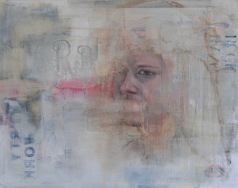














 In another Hildebrand painting, the artist uses a drawing from his childhood and with painted line, tethers the drawing to the bulbous male form. Including the actual paper drawing in the composition conveys history. It doesn’t just allude to keepsakes – the dinosaur drawing on notebook paper IS a keepsake. The collage item encourages the viewer to ponder ideas about memory or childhood experiences traveling with us throughout adulthood.
In another Hildebrand painting, the artist uses a drawing from his childhood and with painted line, tethers the drawing to the bulbous male form. Including the actual paper drawing in the composition conveys history. It doesn’t just allude to keepsakes – the dinosaur drawing on notebook paper IS a keepsake. The collage item encourages the viewer to ponder ideas about memory or childhood experiences traveling with us throughout adulthood.





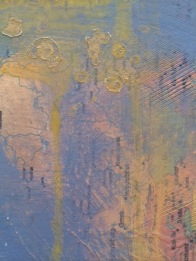 ions. Until then, thank you for reading….and a Happy Healthy New Year to all!
ions. Until then, thank you for reading….and a Happy Healthy New Year to all!